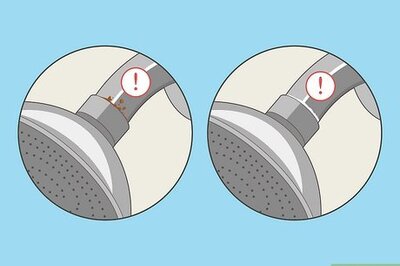
views
Solving Rule 16
Include the next optimal move in algebraic notation in your password. Since the chessboard is randomly generated for each game, there is not one correct answer. To solve this puzzle, you will need to know how to play chess and how to read and write algebraic notation. If you are not skilled at chess, there are ways you can cheat to find the answer.
Algebraic Notation Explained
Chess piece letters. In algebraic notation, each chess piece (except for pawns) is indicated with a capital letter. The first letter in algebraic notation indicates which piece is being moved. If no capital letter is in front of the move, this indicates the piece being moved is a pawn. The letters for the chess pieces are as follows: "K" = King "Q" = Queen "N" = Knight "B" = Bishop "R" = Rook No letter = Pawn
Board positions. This indicates where the piece moves to. In chess, the vertical columns of the board are indicated by the letters A - H with the furthest column on the left being the A column, and the furthest column on the right being the H column. The horizontal rows of the chessboard are numbered 1 - 8 with the row that is closest to the player being the 1 row, and the row that is furthest from the player being the 8 row. If a piece moves to e4, this indicates it is moving to the space that is in the 4th row in the "e" column.
Special moves. In addition to the pieces and where they can move to, there are also notations for what a piece does in that space. They are as follows: "x" = piece captured: If a piece captures another piece during a move, this is indicated by placing an "x" after the piece letter and before the square that it moves to. "+" = check: If the move puts the other player in check (meaning their king can be captured), this will be indicated by placing a plus (+) sign after the notation. "++" = checkmate: A checkmate is the winning move in chess. It indicates the other player's King is in a position to be captured, and they have no moves to escape. If a move puts the other player in checkmate, it is indicated with a double-plus (++) at the end of the notation. "0-0" = kingside casting: Castling is a special move in which the King and the Rook move simultaneously and switch sides. It can only be done if the king and rook have not moved yet, the king is not in check and doesn't pass through a check, and there are no pieces in between the king and rook. If can king castles with the rook on the kingside (right side), this is indicated with a "0-0". "0-0-0" - queenside casting:" If a king castles with the rook on the queenside (left side), it is indicated with a "0-0-0".
Examples of algebraic notation. The following are some examples of algebraic chess notation with explanations: "e4"—This is a pawn moving to the "e4" square. Since there is no capital letter in front of the space, we can assume it is a pawn that is moving. "Nc3"—This is the knight moving to the c3 square. The capital "N" indicates it is a knight moving. "Bxf4"—This indicates the bishop moves to the f4 square and captured a piece on that square. The "x" placed between the piece and square notations indicates it is capturing a piece. "Qxa4+"—This indicates the queen is moving to the a4 square, capturing a piece and putting the other player in check. The plus at the end indicates the other player is now in check. The "x" indicates the queen is capturing a piece on the "a4" square.
Using NextChessMove.com
Use NextChessMove.com to quickly solve the rule. If you're not good at chess and/or you don't want to take the time to figure it out, you can easily solve the puzzle using a website like NextChessMove.com. To do so, open NextChessMove.com in a separate browser tab. Arrange the pieces so that they match the pieces you see in the image on The Password Game. Click Calculate Next Move. Then copy and paste the algebraic notation into your password. Be sure to adjust the rest of the numbers in your password so that it complies with Rule 5 (The digits in your password must add up to 25).



















Comments
0 comment